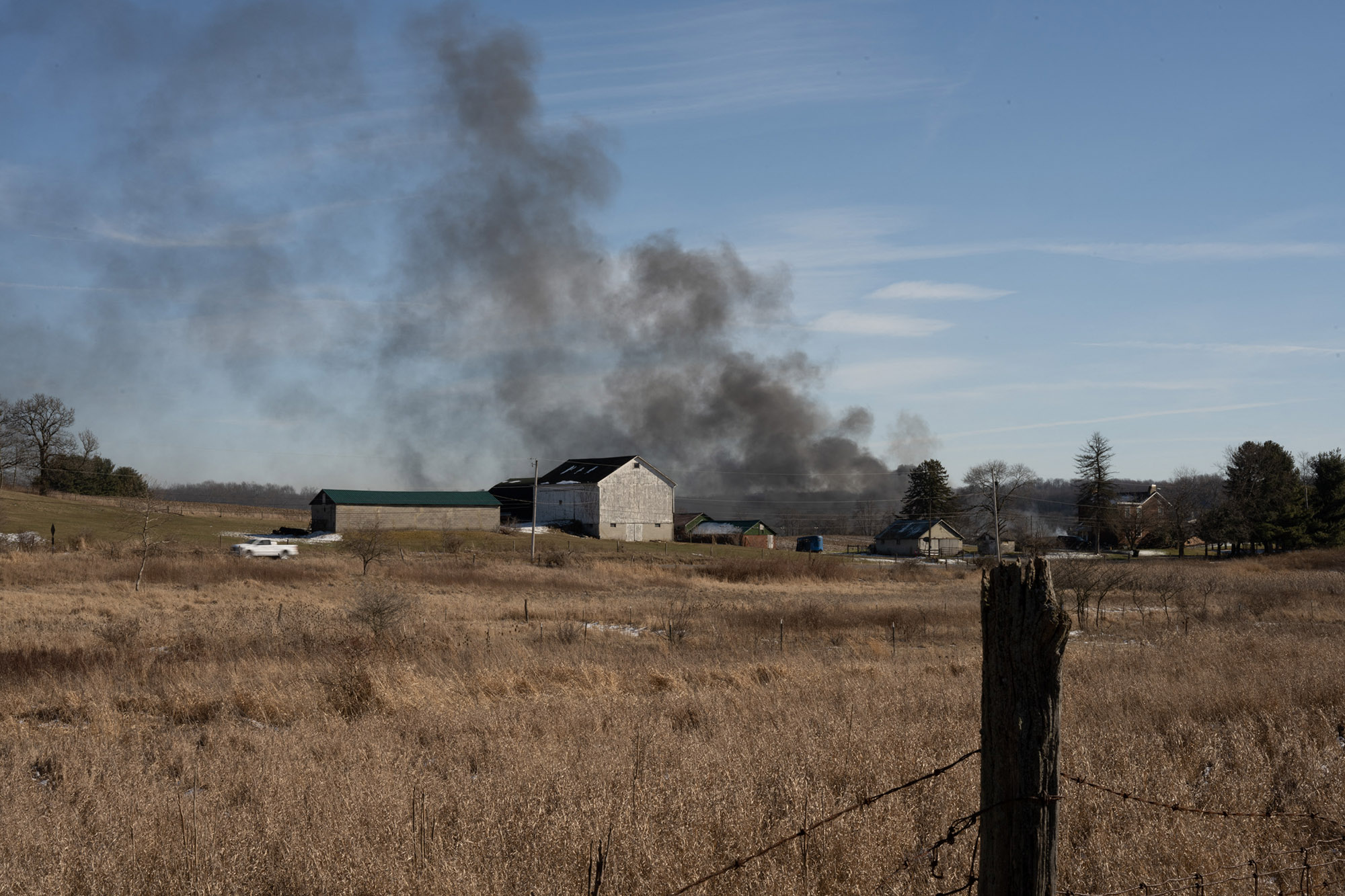Toxic Chemical Residue From Ohio Train Derailment Found In Buildings For Months

Table of Contents
The Extent of the Contamination
The Ohio train derailment released a cocktail of hazardous chemicals, including vinyl chloride, butyl acrylate, and other toxic substances. These chemicals haven't simply dissipated; testing reveals their presence in buildings months after the incident. The contamination isn't limited to the immediate vicinity of the derailment; evidence suggests a wider geographical spread, impacting both residential and commercial areas. Even schools have shown traces of the toxic chemical residue, raising profound concerns about the long-term effects on children.
- Buildings Affected: Residential homes, commercial properties, schools, and community centers.
- Chemicals Detected: Vinyl chloride, butyl acrylate, ethylene glycol monobutyl ether, and other unidentified compounds.
- Geographical Spread: Contamination extends beyond the immediate area surrounding the derailment site, impacting a wider radius.
- Levels of Contamination: While precise data is still emerging and varies by location, reports indicate detectable levels of certain chemicals in building materials and air samples, measured in parts per million (ppm) and parts per billion (ppb). Ongoing testing and monitoring are crucial to fully understand the extent of the contamination.
Long-Term Health Risks Associated with Exposure
Exposure to the chemicals released during the derailment poses significant short-term and long-term health risks. Vinyl chloride, for example, is a known carcinogen linked to an increased risk of liver cancer, brain cancer, and other serious illnesses. Butyl acrylate can cause respiratory irritation, skin sensitization, and eye problems. Long-term exposure to these and other chemicals could lead to a range of health issues, including:
- Respiratory Problems: Asthma, bronchitis, and other lung conditions.
- Cancer Risks: Increased risk of various cancers, depending on the specific chemical and level of exposure.
- Neurological Effects: Potential for cognitive impairment, neurological disorders, and developmental issues in children.
- Reproductive Issues: Concerns about fertility and potential birth defects.
The CDC and other health organizations are providing resources and information on the potential health effects of exposure to these chemicals. Further research is needed to fully understand the long-term consequences for those exposed.
Environmental Impact and Cleanup Efforts
The environmental impact of the toxic chemical residue extends beyond the immediate area. Contaminated soil and water sources pose ongoing threats to the ecosystem. Cleanup efforts are underway, but face significant challenges. The sheer scale of the contamination, the complexity of the cleanup process, and the cost involved are major hurdles.
- Environmental Impact: Soil and water contamination, potential impact on wildlife, and long-term effects on the ecosystem.
- Cleanup Challenges: Costly remediation efforts, technological limitations in removing certain chemicals, and the need for long-term monitoring.
- Government Response: Ongoing investigations into the causes of the derailment and legal actions against responsible parties.
Support for Affected Residents
Affected residents require comprehensive support, including access to medical care, mental health services, and relocation assistance if necessary. While some support is being provided, gaps remain, highlighting the need for a more robust and coordinated response.
- Available Resources: Medical screenings, mental health services, relocation assistance (in some cases), and legal aid.
- Community Initiatives: Local organizations and community groups are providing essential support and advocacy.
Prevention and Future Preparedness
The Ohio train derailment underscores the urgent need for improved safety regulations and prevention measures. Preventing future incidents requires a multi-pronged approach focusing on infrastructure improvements, enhanced safety protocols, and improved emergency response planning.
- Improved Safety Regulations: Stricter regulations for the transportation of hazardous materials, improved track maintenance, and advanced safety technologies.
- Enhanced Emergency Response: Better preparedness for handling chemical spills and other environmental disasters, including improved communication and coordination among agencies.
Conclusion
The presence of toxic chemical residue in buildings months after the Ohio train derailment highlights the devastating and long-lasting consequences of such disasters. The associated health risks, environmental damage, and the ongoing challenges faced by affected communities demand sustained attention. Continued monitoring, thorough cleanup efforts, and long-term support are crucial. We must learn from this tragedy and advocate for stricter safety regulations to prevent future incidents involving toxic chemical residue from train derailments and similar disasters. The long-term health and environmental consequences demand immediate and sustained action. Stay informed, and demand accountability for the responsible parties to ensure the safety and well-being of affected communities.

Featured Posts
-
 Is Rayan Cherki Manchester Uniteds Next Signing
May 28, 2025
Is Rayan Cherki Manchester Uniteds Next Signing
May 28, 2025 -
 Welcome To Wrexham Your Guide To The Best Attractions And Activities
May 28, 2025
Welcome To Wrexham Your Guide To The Best Attractions And Activities
May 28, 2025 -
 Leeds United Transfer News Kalvin Phillips Return On The Cards
May 28, 2025
Leeds United Transfer News Kalvin Phillips Return On The Cards
May 28, 2025 -
 E1 Million Lotto Jackpot Winners Location And Urgent Appeal
May 28, 2025
E1 Million Lotto Jackpot Winners Location And Urgent Appeal
May 28, 2025 -
 2026 Duenya Kupasi Nda Ronaldo Olmasin Mi Hasselbaink In Keskin Goeruesue
May 28, 2025
2026 Duenya Kupasi Nda Ronaldo Olmasin Mi Hasselbaink In Keskin Goeruesue
May 28, 2025
Latest Posts
-
 The Evolving Good Life Adapting To Change And Maintaining Balance
May 31, 2025
The Evolving Good Life Adapting To Change And Maintaining Balance
May 31, 2025 -
 Is This The Good Life For You Self Assessment And Goal Setting
May 31, 2025
Is This The Good Life For You Self Assessment And Goal Setting
May 31, 2025 -
 The Good Life A Holistic Approach To Personal Growth
May 31, 2025
The Good Life A Holistic Approach To Personal Growth
May 31, 2025 -
 Understanding The Good Life Values Purpose And Wellbeing
May 31, 2025
Understanding The Good Life Values Purpose And Wellbeing
May 31, 2025 -
 The Versatile Duo Exploring The Uses Of Rosemary And Thyme
May 31, 2025
The Versatile Duo Exploring The Uses Of Rosemary And Thyme
May 31, 2025
